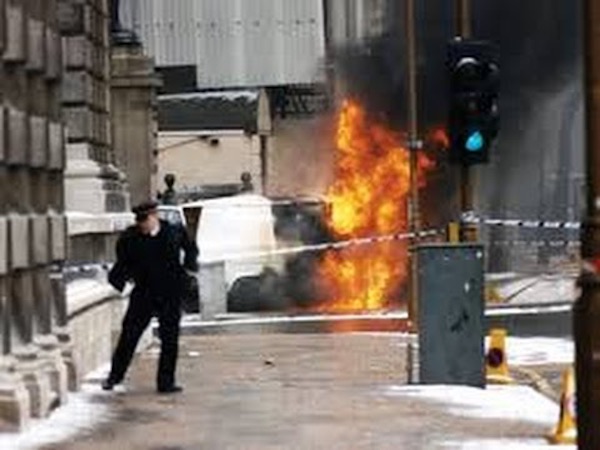
A look back at a famous incident from the conflict, 31 years ago this week, by Lasair Dhearg.
At approximately 10am on the morning of the 7th of February 1991, as British Prime Minister John Major sat down with his War Cabinet in the Cabinet room of number 10 Downing Street, a white Ford Transit van, parked itself over 200 yards away, at the intersection of Horse Guards Avenue and Whitehall, outside Britain’s Ministry of Defense.
A large hole cut from its roof, its driver door opened and out stepped a Volunteer of the Irish Republican Army, who calmly made his way to a waiting motorcycle driven by another Volunteer in the IRA Active Service Unit, upon which they promptly made their escape.
Concealed within the van, were several improvised metal mortar tubes secured to its floor, containing Provisional IRA developed Mark 10 Mortar rounds, three to four feet long, each with a short-fuse timing device and armed with warheads containing 40lbs of high-grade plastic explosive Semtex.
This operation was like many others conducted by the IRA. The mortar devices they had developed were first used in combat in 1979 by the IRA’s South Armagh Brigade, and employed extensively in attacking British Army Barracks. These, and later variants, caused the British Army to significantly adapt their tactics and strategy, and move a significant number of their Base’s at least one mile from their imposed border in Ireland, such was the IRA’s technical capabilities.
But this operation was also quite different. It had to be conducted in unfamiliar territory. Moreover, there was no direct line of sight between the launch site and their intended target. IRA Volunteers had to be meticulous, and mathematically devise the exact location that the mortars should be fired from in order to hit their intended target. Too close and they might overshoot. Too far away and they might not reach.
Additionally, the direction of the mortars’ aim created the biggest issue, just a few degrees to the left or the right and they’d be knocking out buildings on either side of their intended target.
The van had to be parked perfectly.
Just eight minutes later, as a uniformed officer of London’s Metropolitan Police walked his way to the abandoned weapons platform, the firing mechanism contained inside initiated, and the van shuddered backwards.
Launched using fast-burning propellant made of weed killer and sugar, they were fired in two volleys: first as a pair to balance the recoil, then a single in the middle. The trajectory sent them in an arc over the roofs of the Horse Guards buildings on Whitehall, with two landing in Mountbatten Green behind the Foreign Office, on Downing Street. The third mortar landed in the rear garden of number 10 Downing Street, just yards from the British War cabinet.
The substantial building shook violently, and the Cabinet Room’s bomb-proof windows buckled inwards, as the Prime Minister and his War Cabinet scurried like rats, taking cover underneath their substantial table. The damage to Numbers 10 and 11 Downing Street – the Prime Minister and Chancellor of the Exchequer’s official residences – was substantial. The direct hit left a crater several feet deep at its impact site.
Almost immediately, British security personnel in the capital scrambled to secure all Government buildings for fear of impending attacks. Hundreds of officers sealed off the entire area in Central London around the main British Government offices, from the Houses of Parliament to Trafalgar Square, leaving Whitehall almost deserted, as a secondary device contained within the van ignited, causing the vehicle to burst into flames and seriously curtailing any British attempts at forensic examination of both it and the weaponry.
Greater still was the damage caused to Britain’s war and propaganda machine, as the IRA displayed their ever-growing capability to strike at the heart of the British Government and bring Britain’s war in Ireland to the capital of their crumbling Empire.
“Like any colonialists”, said P O’Neill, nom de guerre of the IRA’s Army Council, “the members of the British establishment do not want the result of their occupation landing at their front or back doorstep … Are the members of the British cabinet prepared to give their lives to hold on to a colony? They should understand the cost will be great while Britain remains in Ireland … Let the British government understand that, while nationalist people in the Six Counties are forced to live under British rule, then the British Cabinet will be forced to meet in bunkers”.
![[Irish Republican News]](https://republican-news.org/graphics/title_gifs/rn.gif)
![[Irish Republican News]](https://republican-news.org/graphics/title_gifs/harp.gif)

